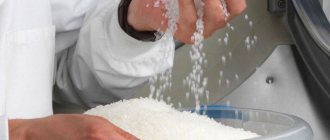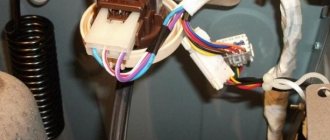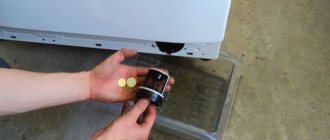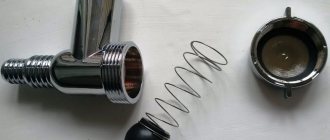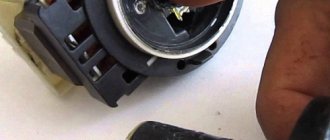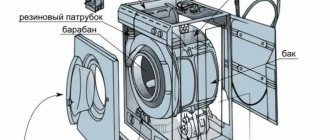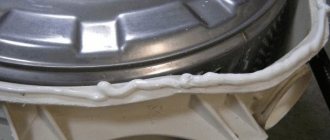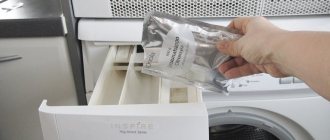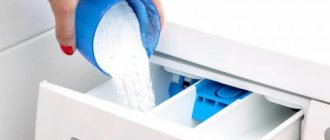Washing powder is an indispensable helper for the home. Today, housewives can no longer imagine how they could do laundry without it. They buy different types of powders, bleaches, conditioners, and cannot do without Calgon and other products. However, most of them rarely think about the threat posed by synthetic substances that are part of household chemicals. Although recently more and more women are trying to make washing powder with their own hands for use in automatic washing machines, it is important that it has high cleaning properties and is safe.
Why are industrial household chemicals harmful?
The greatest danger is posed by phosphates, which are added to enhance the cleaning effect. During the washing process, phosphates penetrate the fabric fibers, then reach the skin, and then directly to the person. Large doses of phosphates are toxic to the liver, kidneys and lungs, causing allergies, itching, contact dermatitis, and a general decrease in immunity.
Remaining on clothes, dangerous substances that are part of washing powders penetrate the skin and suppress the immune system.
The danger lies in the fact that the effect of phosphates is invisible. Every day a person receives small portions of these chemicals, constantly coming into contact with clothes washed with phosphate powder. People don’t even realize how much harm they are doing to their body. In addition, phosphates remain in tissues for a very long time, and it is quite difficult to get rid of them even with high-quality intensive rinsing.
Over the past few years, people have become so accustomed to trusting advertising that, out of habit, they continue to purchase dangerous household chemicals and do not even think about the fact that there is a worthy alternative to expensive synthetic products - environmentally friendly washing powder. After all, making it with your own hands is very simple.
The natural ingredients included in its composition are inexpensive, it takes little time to prepare, but the product lasts a long time. But most importantly, it is safe for the human body and the environment.
Natural powder ingredients
It contains inexpensive and environmentally friendly ingredients. Those housewives who want to use natural products to wash their clothes should know more about their properties, as well as how to choose them correctly:
- The main component of natural detergents is soap. To make the powder yourself, any soap is suitable - laundry, baby or toilet soap. To make it as natural as possible, you need to use castile soap based on olive oil or solid glycerin soap. The ideal detergent is ordinary dark laundry soap 72%. It has the greatest activity and softens fabric fibers, which is especially important for washing delicate children's clothes. You can use unnecessary pieces of soap, which are usually simply thrown away as unnecessary. This will create additional savings. Before preparing the crumbs, it is recommended to dry the soap a little first. To do this, you need to remove it from the package and put it in a dry place, next to a heating device or in the sun;
- Instead of the bleach and active ingredients that every laundry detergent contains, you can use baking soda. It is an excellent cleaning agent. You can buy it in any supermarket, and, as you know, it is quite inexpensive. Soda, which is part of the laundry detergent, cleans fabric fibers without damaging them, and also keeps laundry white and neutralizes odors;
- It is advisable to add soda ash to the homemade powder. It has the same properties as food, only its concentration and activity are several times higher. Soda ash is part of Calgon, a widely advertised washing machine product. But you don't have to use it. In fact, you can do without Calgon, because it does not so much fight scale as soften the water. In fact, by buying it, a person is simply paying three times the price for regular soda ash;
- a necessary component of natural powder is borax. This substance is sodium tetraborate or sodium boric salt, and also has a very strong cleaning and disinfecting effect. Thanks to these properties, it is actively used in the production of detergents for children's clothes. Borax can be purchased at hardware stores, pharmacies, and stores selling homemade cosmetics;
Borax (sodium tetraborate) has an antifungal and antibacterial effect, perfect for washing children's clothes
- To make things smell nice after washing, you need to use essential oils. Natural aromatic substances not only give the fabric a pleasant smell, but also additionally disinfect the clothes. The beneficial components included in their composition partially remain in the fabric fibers and come into contact with the skin, thereby having a positive effect on the body. For example, tea tree oil has antifungal properties; it is recommended to add it when washing children's clothes. Citrus oils (sweet orange, bergamot, lemon) are excellent fat dissolvers. Eucalyptus and mint are recommended for use during colds. Chamomile and lavender oils have a calming and relaxing effect. The use of jasmine and rose oils gives clothes an exciting romantic scent.
Using laundry soap for beauty
- Washing hair with laundry soap.
Washing your hair with laundry soap improves its thickness. Wash your hair only with laundry soap once a week. It makes hair thicker, split ends, hair loss and dandruff disappear. After washing with laundry soap, rinse your hair with a solution of natural apple cider vinegar (1 tablespoon per 1 liter of water) or hair balm. It's good to have rainwater to rinse your hair. - Facial rejuvenation with laundry soap. Wash your face twice a week with laundry soap, and then lubricate it with rejuvenating cream or baby cream. The face will be much younger, the effect is superior to expensive store-bought cosmetics.
- Cleansing the body with laundry soap. In the steam room (if the steam room is not contraindicated for you), you need to whip yourself with a birch broom dipped in a soap solution. Then wash off. After this procedure, the skin seems to glow from the inside.
- Wash your body with laundry soap twice a week. This will save the body from diseases.
- Cracked heels and corns.
Using laundry soap to clean your feet Pour two liters of hot water into a basin and add one tablespoon of baking soda and 1 finely grated shavings of laundry soap. Mix well and soak your feet in the solution for 20 minutes. Then carefully remove the exfoliated skin with a special grater. Apply soap foam to problem areas and let dry. In just 7 procedures you can get your feet in perfect order. - Facial peeling. Lubricate your face with foam from laundry soap and then wipe with a cotton swab soaked in calcium chloride along the massage lines. As a result, the skin will cleanse well, become soft and velvety, and wrinkles will disappear.
DIY washing powder recipes
There are many ways to make your own laundry detergent. Many of them are known to many and have been used for a long time. There are three most popular formulations of natural powders. Their ingredients are inexpensive and preparation takes very little time. A slight violation of the proportions will not affect the washing result.
Components for washing powder
Recipe No. 1: classic homemade powder based on soap, soda and borax. It includes:
- soap crumbs - 1.5 cups;
- soda ash – 1 cup;
- baking soda – 0.5 cups;
- borax – 1 glass;
- essential oil – 10 – 15 drops (optional).
Recipe No. 2: a simplified version based on soap and soda. This powder includes:
- soap crumbs - 1.5 cups;
- soda ash - 2 cups;
- baking soda – 2 cups;
- essential oil – 10-15 drops (optional).
Recipe No. 3: baby laundry detergent. To prepare it you need to mix:
- soap crumbs - 150 grams;
- baking soda – 500 grams;
- borax – 200 grams;
- tea tree oil – 3-5 drops.
Let's protect cucumbers
This crop is attacked by these little pests very often. Moreover, this is visible to the naked eye. The leaves wither, the vines fall, and you can no longer expect fruit from such a plant. The soap solution against aphids on cucumbers has proven to work very well, so all gardeners recommend its use to each other.
To prepare, you will need the same base, three liters of water and 0.5 cups of soap. To ensure that insects leave the garden alone, 100 g of crushed tobacco is added to the solution. Mix all the ingredients and leave to brew well for two days. After this, be sure to stir and strain. The solution is now ready for use. It is perfect for processing vegetable and fruit crops. It has proven itself very well in practice.
Preparation of the powder
Preparing the powder is very easy:
- make fine soap crumbs. To do this, grate the soap on a fine grater. You can use a coarse grater (it will take less effort), but after that the chips will need to be further crushed using a blender;
- mix all the components one by one: soap crumbs, soda ash, borax, baking soda, essential oils;
- mix thoroughly, place in a plastic or glass container and close with a lid. Store in a cool, dry place.
To use the powder in a vending machine, the soap must be finely grated, otherwise grains may remain on clothes.
Multi-component products
There are many recipes based on HM, let’s look at the most popular ones.
From laundry soap and soda. This is the simplest recipe - CM is mixed with sodium bicarbonate in a ratio of 1:2 or 1:2.5. You will need:
- soap bar - 100 g;
- soda - 3 tbsp. l.;
- water - 4 l.
Preparation procedure:
- Fill a metal pan with warm water.
- Place the shavings obtained on a fine grater into water.
- Heat the pan over low heat while stirring the mixture.
- When the chips dissolve, turn off the heat.
- In a separate container, mix 3 liters of hot water with 3 tbsp. l. soda
- When the soda dissolves, add the soda solution to the soap solution.
- Stir the resulting mixture until it has a homogeneous consistency—it should resemble liquid laundry gel.
- Pour the resulting mixture into a plastic container and place it in a dark, dry place.
With activated soda. To enhance the washing effect, instead of regular soda in the above recipe, use activated soda. You can prepare it yourself - scatter sodium bicarbonate on a baking sheet and place in the oven for 1 hour. The temperature is set to 200 °C.
With soda ash. This option is even more powerful. The calcined version activates the alkaline reaction, allowing you to remove old dirt. For 1 kg take:
- XM shavings - 150 g. To measure this amount, take a 1 liter jar - it should be slightly incomplete.
- Baking/soda ash - 500/400 g.
- If desired, you can add 3-4 drops of essential oil.
- 2 tbsp. l. salt - to fix the color if you have to wash colored clothes.
- 3 tbsp. l. citric acid - to soften fabrics.
All ingredients are mixed and stored in a hermetically sealed container. Stored for 3 years. The prepared mixture is not safe for the skin; it cannot be washed by hand without gloves. When washing in SMA, 1–2 tbsp is used for one cycle. l. mixtures.
For children's underwear. To prepare powder for washing children's clothes, you will need borax. Mix the ingredients:
- borax (this is sodium borate - do not confuse it with boric acid) - 200 g;
- XM shavings - 150 g;
- sodium bicarbonate - 500 g;
- essential oil - the child should not be allergic to it.
Gel. To prepare a liquid product, proceed as follows:
- Rub baby XM - 180 g.
- After dissolving the shavings in 8 liters of boiling water, add 180 g of soda ash.
- After mixing the ingredients, cool.
- Pack in plastic bottles.
- If desired, add aromatic oil.
Usage and dosage
The resulting concentrated washing powder is used for soaking laundry and for any type of washing. For hand washing, add 1 tablespoon of powder to warm water; for machine washing, 1-2 tablespoons. You can load powder either into the powder compartment or directly into the tank. Before washing in a machine, it is advisable to dissolve the powder in hot water to prevent possible soap stains on the fabric. Each time before washing, the container with the powder must be shaken.
Before switching from store-bought powder to natural powder, it is advisable to wash your clothes with hot water with the addition of 50 g of baking soda. This is done in order to remove chemical residues from the purchased product from clothing. Without this procedure, white tissues may turn yellow.
If the soap is ground on a coarse grater, the powder should be added not to a special compartment, but to the laundry
Using laundry soap in the garden:
Laundry soap in the garden and vegetable garden is used in a variety of ways:
- Soil deoxidation. On acidic soils the harvest is poor. A lot of work, but little use. Laundry soap has ph=12. Therefore, before planting plants, the soil must be washed with soapy water. To do this, grate a 200 g bar of soap, dissolve it in hot water and, after straining, pour it into a 10-liter bucket. This is enough for 1 square meter of soil.
- Control of aphids and other pests. A solution of laundry soap will destroy aphids due to the fact that they have thin skin. In addition, the viscous solution of laundry soap lights up their spiracles.
Using laundry soap in the garden
- Destruction of plant fungus, because a solution of laundry soap is a powerful antiseptic.
- Processing pruners and containers for seedlings because the tool and pots for seedlings can be contaminated with mold and other types of fungi.
ATTENTION: Keep in mind that the soap solution must be filtered. If soap pieces get on the leaves, they will cause a burn.
In addition, after 2-3 hours, plants sprayed with a soap solution should be watered with clean water from a hose and the solution should be washed off.
Benefits of natural powder
This composition, made with your own hands, is in no way inferior to expensive synthetic products in terms of washing quality. It protects the structure of the fabric, so things will last a long time. By making the powder yourself, you can significantly save your family budget. In addition to the low cost, it should be taken into account that you no longer have to buy an air conditioner or softener; you can do without Calgon. After all, natural powder already has softening and refreshing properties. The essential oils included in its composition give the linen a pleasant aroma, and soap and soda soften the fibers of the fabric. And to prevent scale from damaging your washing machine, you can repeat the Calgon effect. For preventive maintenance, it is enough to run it idle at a temperature of 90 degrees 1-2 times a year, pouring 100 grams of citric acid into the powder compartment. This way you can do without Calgon, and there is no point in spending fabulous money on expensive products.
In the detergent for fabrics made from artificial fibers, most of the soda ash is replaced with baking soda.
All components of the homemade powder are environmentally friendly and do not cause allergic reactions. The essential oils included in the product strengthen the immune system and improve the body's protective functions. In addition, by using a powder consisting only of natural ingredients, the housewife takes care of the environment. Using a natural detergent for your automatic machine, prepared by yourself, is the key to a healthy lifestyle, saving the family budget and comfort in the home.
Cooking method
Almost all recipes consist of the most accessible ingredients:
- Water brought to a boil - 500 milliliters;
- Soap – 25 grams;
- Glycerin – 100 grams;
- Diluted alcohol – 25 grams.
Procedure:
- Place the crushed soap to dissolve in a water bath;
- Add water and stir until the soap is completely dissolved;
- Remove foam;
- Let the mixture cool a little. Add remaining ingredients;
- Pour into a suitable container and leave for an hour.
You can reduce cooking time by replacing the water bath with heating in the microwave.
You can reduce cooking time by replacing the water bath with heating in the microwave.
For the gel paste you will need:
- Laundry soap, small piece;
- Dry mustard;
- Ammonia;
- Soda.
In combination, such potent components can remove even complex stains.
First, finely grated laundry soap should be dissolved in water. After cooling to room temperature, add all other ingredients, taken in equal quantities. Stir and leave to infuse for several hours.
The paste can remove even complex stains.
There is another way. This recipe is suitable for washing glass and ceramic surfaces, as well as for cleaning a gas stove.
Mix one teaspoon of hydrogen peroxide with the same amount of soda and dilute everything with one glass of hot water. To clean contaminated surfaces, you can pour the solution into a spray bottle.
Dry mustard copes well with heavily soiled surfaces. Dissolve 20 grams of mustard powder in a liter of hot, almost boiling water. Stir vigorously until strong foam forms. Then, add 30 grams of soda and mix everything again. At this point the foam will disappear.
Dry mustard copes well with heavily soiled surfaces.

